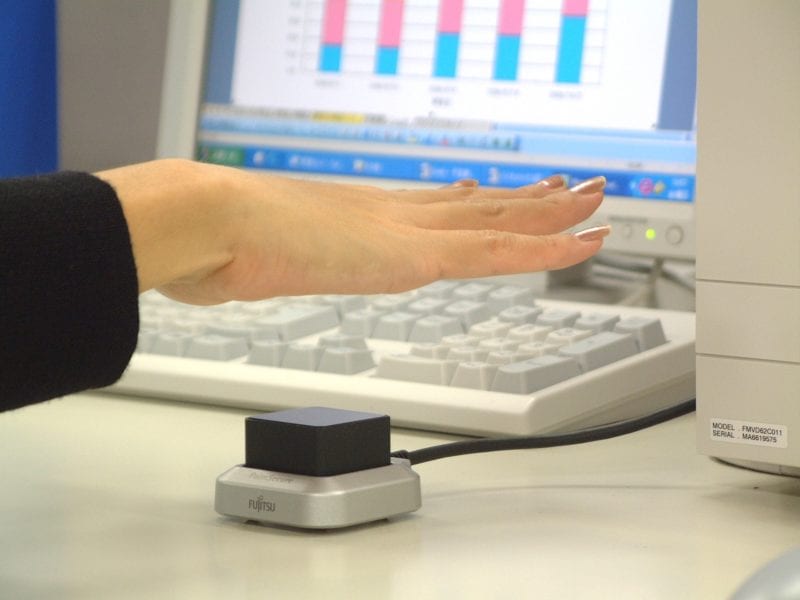August 06, 2013 – By Peter B. Counter
Palm-based biometric authentication, otherwise known as vascular recognition, despite all of the factors pushing in its favor, is not the kind of scanning you see in your everyday identity solution. When it comes down to brass tacks, the demand for iris and fingerprint scanners tends to outshine the less ubiquitous solution, despite its token benefits: no-contact scanning and high accuracy.
For palm vein scanning technology to stay at pace with its more widely used counterparts, it has a long way to go in terms of speed and flexibility, or at least it did until now, with Japanese high technology company Fujitsu announcing yet another improvement to the authentication method it’s been championing for some time now.
Fujitsu has taken palm vein reading under its wing for nearing a decade, first introducing its PalmSecure unit in 2006. After being selected as a “World-Changing Idea” by Scientific American Magazine in 2011, the PalmSecure underwent a redesign to become the thinnest zero-contact authentication technology of of its kind, and underwent a general release earlier this year. Now it’s been announced that Fujitsu is at it again, this time dramatically streamlining the process with what it is calling the first technology capable of extracting and matching 2,048 bit codes from palm vein images.

The new technology matches palms through a mathematical comparison, allowing for authentication to be granted in approximately a single microsecond, as opposed to the several milliseconds afforded by previous palm vein scanning options. The increase in speed is made with no sacrifice to the accuracy of the solution, which has tested with a false positive rate of 1/100,000.
Fujitsu Laboratories’ technology segments the palm vein image into regions based on the volume of information provided by each area of the hand. From this, the aforementioned binary feature code is produced. The accuracy of this solution is maintained by normalizing the contour information of the hand, correcting for position and shape, improving the reproducibility of the feature code while making it difficult to reverse-engineer the original image.
The end benefits: a digital code based on the biometric imprint of a user’s palm-vein image that can be further encrypted by auxiliary security technologies and regenerated as new in case of compromise in the same way traditional passwords work. Fujitsu expects to commercialize this technology by 2015, with possible applications in access control, e-commerce and security.
Needless to say, this new serving of palm-vein authentication technology markedly improves on the old offerings. A point was made in the announcement of stating that this technology can run on current generation computers, and with Fujitsu’s history of deploying biometric security on consumer grade technology, like it did recently by including a Validity fingerprint sensor in the LIFEBOOK laptop computer, it looks like the company is hoping for a future of new, palm based passwords for everyday life.


Follow Us